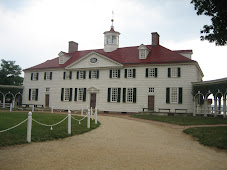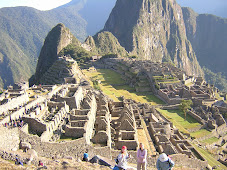 Perhaps one of the most difficult and abstract concepts to teach in U.S. Government is the system of checks and balances between the three branches of the national government. When faced with a difficult concept, it is always wise to explore different approach and see which one would fit the developmental understanding of your audience’s age group. For me, I need to find the least confusing but most effective method for my 7th graders not only to understand but to be able to transfer this knowledge to other systems of our society that would benefit from “checks and balances”. There are two key principles of “checks and balances” – first, the principle that each branch of the government has the right to limit the other two branches from abusing their powers; second, the principle that each branch often are limited by the other two branches. Sounds confusing, doesn’t it?
Perhaps one of the most difficult and abstract concepts to teach in U.S. Government is the system of checks and balances between the three branches of the national government. When faced with a difficult concept, it is always wise to explore different approach and see which one would fit the developmental understanding of your audience’s age group. For me, I need to find the least confusing but most effective method for my 7th graders not only to understand but to be able to transfer this knowledge to other systems of our society that would benefit from “checks and balances”. There are two key principles of “checks and balances” – first, the principle that each branch of the government has the right to limit the other two branches from abusing their powers; second, the principle that each branch often are limited by the other two branches. Sounds confusing, doesn’t it? According to Bruner’s discovery learning, teachers will have to first provide examples and guide students to work on these examples until the students find the fundamental idea/ subject structure of the abstract concept. Students will first be presented with different powers given to each of the three branches of the government (legislative, executive, judicial), specifically powers that set restrictions on the other two branches. After all the examples of powers are presented, teacher will ask a guiding question – “which of these powers are related to each other?” For example, the presidential veto is an executive power that sets restriction on the legislative power of Congress to make laws. From there, students will be able to work through the other examples and find that although each branch possesses powers to limit the actions of the two branches, each branch also is subject to the limitation set by the other two branches. Although Bruner’s model is time consuming, I believe that since the students discovered the relationship between the branches of government on their own, the understanding becomes more intrinsic and it will allow a more meaningful transfer later on. Technology can definitely create a helpful visual of the relationship between the three branches of government. An interactive diagram of the three branches can be created for the students to click & drag different powers to the correct branch. Then the students can create different color arrows to show how each branch can “check” and “be checked”.
According to Ausubel’s exposition teaching, teachers will first have to explain the fundamental concept by using an advance organizer, which will serve as an “introductory statement” about the information that is about to be presented. In the case of teaching “checks and balances”, teachers will start with the definition of “checks and balances” and a triangular diagram showing the three branches of government along with all the powers possessed by each of the branches. Then the teacher will then move on to demonstrate the first example of the concept, which has already been defined and (hopefully) understood by the students. The teacher will show that although the executive branch of the government has the power to veto, the legislative branch of the government has the power to override the veto. Following the initial example, students will pick another power of a specific branch (ex. the executive power to appoint federal judges) and determine which other branch is affected/limited by this specific power. Technology will probably serve a similar function in the Ausubel’s model as it did in the Bruner’s model – the presentation of an interactive diagram, which will allow students to draw arrows from one branch of the government to another to show the ways in which they can “check” and “balance” each other to prevent the abuse of power by any one branch.
The concept of “checks & balances” will probably be very difficult to transfer. Teachers will need to ask guided questions and perhaps give another example of a system of “checks & balances” that is not related to the structure of our government. Teacher might ask students to consider other situations in which there are divisions of powers – for example, the powers divided between parents/guardians/stepparents, between coaches/teachers, etc. As soon as students identify a similar structure, teachers should create a diagram that will help students recall their work from the three-branches-of-government example. If students can clearly identify different powers belonging to each of the groups in the new scenario and demonstrate the relationship between each of the groups, then transfer will most likely take place. An extension of this activity will be to allow students to find a situation in society that will benefit from having a “checks & balance” system in order to prevent the abuse or misuse of power.






No comments:
Post a Comment